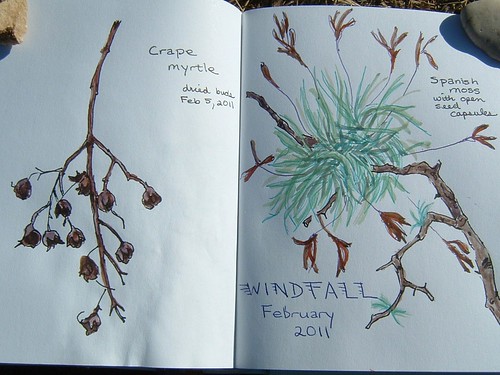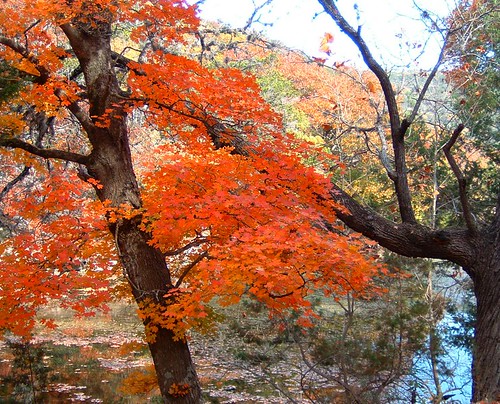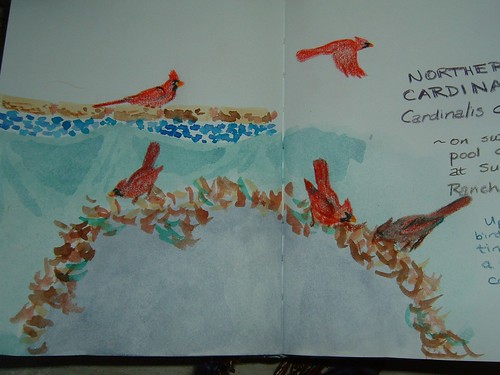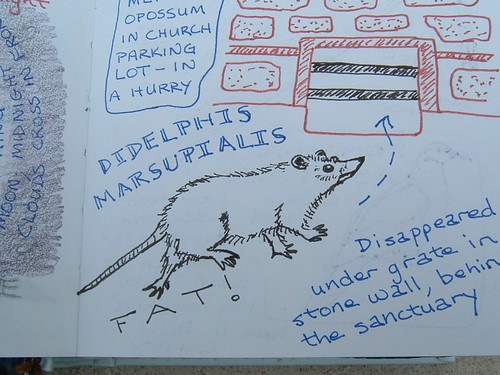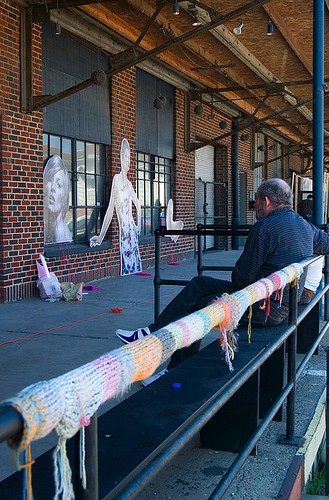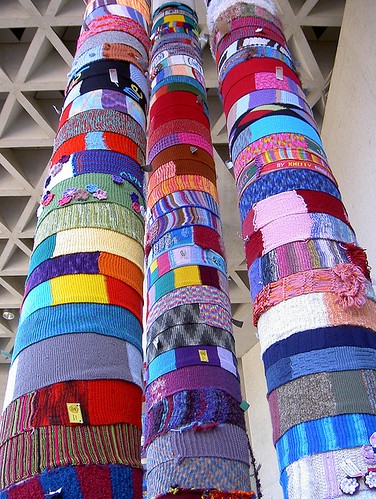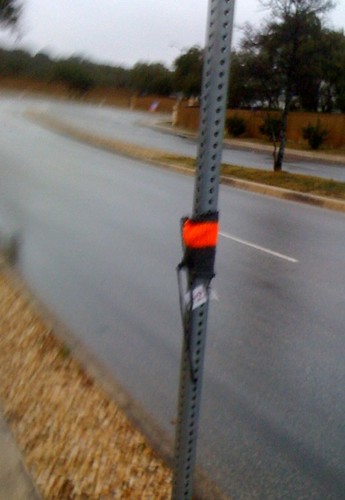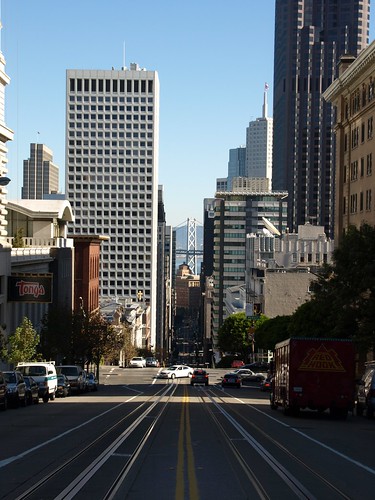The surprise arrival of a package, containing a Red Nose Day T-shirt from my friend Dr. P.M. of Cambridge, reminded me that I have yet to write up the impressions from our medical history perambulations from February 2009. The idea was to try one or more of the walks described in Nick Black’s Walking London’s Medical History, take photos, and discuss the positive and negative aspects of the guidebook. For a variety of reasons, this did not go well for two distractible academic persons with diverse interests in British history, architecture, literature, social justice issues, and gardening … and no, not because I kept looking the wrong way and walking in front of buses and lorries (Dr. P.M. made sure I didn’t do that).
We decided to try Walk 3: A Cradle of Reform, starting at King’s Cross/St Pancras tube station. I believe you are meant to stand near the Euston Road exit and read five to six pages of rather small text, with information about infectious disease hospitals of the 19th century (e.g. London Fever Hospital, London Smallpox Hospital). This seemed likely to annoy other people, so we began walking towards the Royal National Throat, Nose, and Ear Hospital, founded by ENT surgeon Lennox Browne in 1874. There are four pages of rather small text on ENT hospitals and on the Royal Free Hospital, founded by William Marsden and originally located in the abandoned barracks of the Light Horse Volunteers on Gray’s Inn Road. The Royal Free Hospital was moved to Hampstead in 1974, and in its place is the expanded Eastman Dental Hospital.
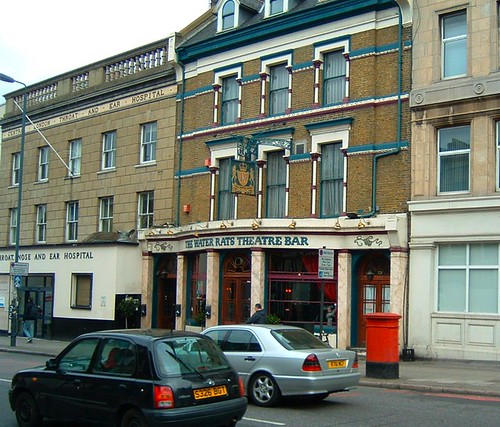
Royal National Throat, Nose, and Ear Hospital
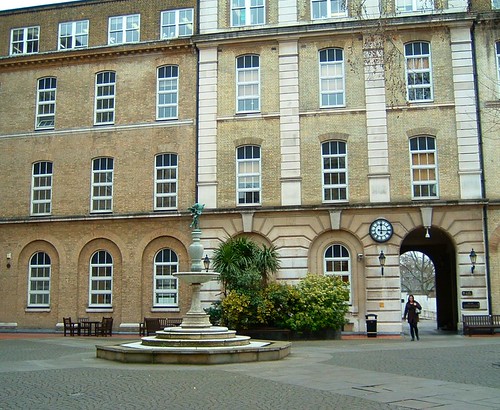
Dental Hospital
Bored yet? We were. But slightly encouraged by the next set of instructions, we crossed Gray’s Inn Road to enter St. Andrew’s Gardens, bordered in part by the former Alfred Langton’s Nurses’ Home, built by the Royal Free to house its nursing staff.
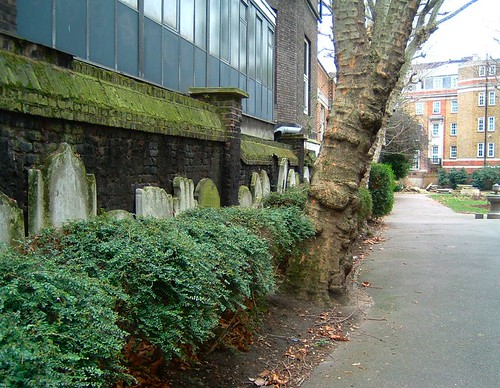
Entering St. Andrew’s Gardens
This lovely urban refuge, which used to include a graveyard, was established through the Vestry of St. Pancras, and contains a public drinking fountain that provided clean water for the poor in the 19th century. It merits only a short paragraph in the guidebook, which is unfortunate, as it sequesters well-maintained rose gardens, visually interesting stacks of old gravestones, and a connection to the community and history of everyday life in London.

Public drinking fountain, St. Andrew’s Gardens

Old gravestones, St. Andrew’s Gardens
On to Calthorpe Street, and there were 22 more pages of photos and squintingly tiny text for this particular walking tour. Our enthusiasm for following the tour to the letter was waning, and there were many fascinating sidetracks and photographic opportunities. We had started to stray from the route described in the guidebook, and several of its negatives had become apparent to us:
1. The map for each walk is tiny, cross streets and sites of interest are not marked, and the page is difficult to access repeatedly (I would have added a sticky tab on the map page). There is no obvious distinction made between existing buildings on former medical use sites, hospitals, and actual medical sites still in use.
2. Even with two literate and possibly over-educated people, it was difficult to follow the map and the extensive text. I think an outline version, embedded with the map on two full facing pages (or on a fold-out) would work better; the detailed history could be presented elsewhere.
We continued to Coram’s Fields, which has an interesting social justice history that I’ll save for the next installment. And as foreshadowing for our getting completely off track, I’ll mention that we also walked through an urban community garden project and took photos there.
To be continued ….

